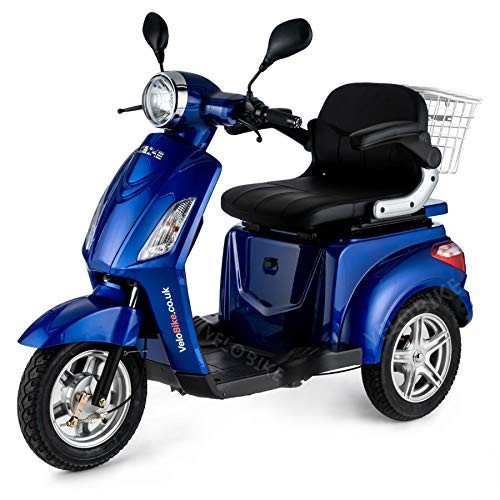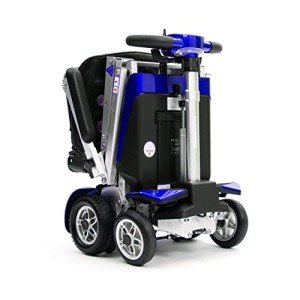For individuals with mobility limitations, a mobility scooter can be a game-changer, offering independence and freedom to explore the world at their own pace. Whether it's for daily errands, social outings, or leisurely strolls, choosing the right mobility scooter is crucial. This comprehensive guide will help you navigate the market, understand the key features to look for, and make an informed decision.
Understanding Mobility Scooters
A mobility scooter is a motorized vehicle designed to assist people with walking difficulties. They come in various shapes and sizes, each tailored to specific needs and environments. Typically, mobility scooters have a seat, handlebars for steering, and a battery-powered motor. They can be used both indoors and outdoors, depending on the model.
Key Features to Consider
When shopping for a mobility scooter, several features should be considered to ensure it meets your specific requirements. Here are some essential factors to keep in mind:
Type of Scooter
- Travel Scooters: Compact and lightweight, suitable for users who need to transport their scooter frequently.
- Front-Wheel Drive (FWD) Scooters: Best for indoor use and small outdoor spaces. They are generally lighter and more maneuverable.
- Rear-Wheel Drive (RWD) Scooters: Ideal for outdoor use, providing better stability and power over uneven terrain.
Capacity and Weight
- User Weight: Ensure the scooter can support your weight comfortably. Capacities range from 200 to 400 pounds or more.
- Scooter Weight: Consider the weight of the scooter itself, especially if you plan to transport it frequently.
Battery Life and Range
- Battery Type: Most scooters use lead-acid or lithium-ion batteries. Lithium-ion batteries are lighter and have a longer lifespan.
- Range: Determine how far you need to travel on a single charge. Ranges can vary from 10 to 30 miles.
Speed and Performance
- Speed: Choose a scooter that offers a comfortable speed for your needs. Most models have speeds between 4 and 8 miles per hour.
- Terrain Handling: Consider the type of terrain you will be using the scooter on. Some models are better suited for rough or hilly areas.
Comfort and Ergonomics
- Seat: Look for a comfortable, adjustable seat with good support.
- Handlebars: Adjustable handlebars can make a significant difference in comfort, especially for long rides.
- Suspension: A good suspension system can enhance the ride experience, especially on uneven surfaces.
Safety Features
- Brakes: Effective braking systems, such as electromagnetic or hydraulic brakes, are crucial for safety.
- Lights and Reflectors: Ensure the scooter has adequate lighting for night use and reflectors for increased visibility.
- Turning Radius: A smaller turning radius makes it easier to navigate tight spaces.
Portability
- Foldability: If you need to transport your scooter, look for models that can fold or disassemble easily.
- Weight of Components: Consider the weight of individual components if you need to lift them into a vehicle.
Maintenance and Warranty
- Service Availability: Check if the manufacturer offers reliable service and support in your area.
- Warranty: A good warranty can provide peace of mind and protect your investment.
Top Mobility Scooters to Buy
Drive Medical Phantom 4-Wheel Scooter
- Type: Rear-Wheel Drive
- Weight Capacity: 500 pounds
- Battery Life: Up to 25 miles
- Speed: 4.5 miles per hour
- Features: Padded seat, adjustable tiller, and a generous weight capacity make it suitable for larger users. It also has excellent suspension and a small turning radius.
Pride Go-Go Elite 3-Wheel Scooter
- Type: Front-Wheel Drive
- Weight Capacity: 275 pounds
- Battery Life: Up to 17 miles
- Speed: 4 miles per hour
- Features: Compact and lightweight, making it ideal for indoor use and travel. It has a durable frame and a comfortable, adjustable seat.
Golden Technologies Elite 3 Wheel Mobility Scooter
- Type: Front-Wheel Drive
- Weight Capacity: 300 pounds
- Battery Life: Up to 20 miles
- Speed: 4 miles per hour
- Features: Known for its reliability and ease of use. It has a smooth ride, a wide seat, and a stylish design.
Merits Health Products M-Sport 3 Wheel Travel Scooter
- Type: Front-Wheel Drive
- Weight Capacity: 250 pounds
- Battery Life: Up to 15 miles
- Speed: 5 miles per hour
- Features: Highly portable and easy to assemble. It is lightweight and comes with a compact design, making it perfect for travel.
Sunrise Medical Quickie Q7 Go Far Heavy Duty 4-Wheel Scooter
- Type: Rear-Wheel Drive
- Weight Capacity: 500 pounds
- Battery Life: Up to 45 miles
- Speed: 5.6 miles per hour
- Features: Exceptional range and performance, suitable for heavy-duty use. It has a robust build and advanced safety features.
FAQs About Mobility Scooters
What is the average cost of a mobility scooter?
- Mobility scooters can range from £500 to £5,000 depending on the features and brand. Entry-level models are typically less expensive, while high-end models with advanced features can cost more.
Do I need a prescription to buy a mobility scooter?
- No, you do not need a prescription to buy a mobility scooter. However, it is advisable to consult with a healthcare provider to determine if a scooter is the right choice for your needs.
Can I use a mobility scooter on public transportation?
- Yes, many mobility scooters are designed to be portable and can be used on public transportation. Check the weight and size requirements of the transport service to ensure compatibility.
How do I maintain my mobility scooter?
- Regular maintenance is essential to ensure the scooter runs smoothly. This includes checking the battery, tires, brakes, and ensuring all parts are clean and lubricated. Refer to the manufacturer’s manual for specific maintenance guidelines.
Are mobility scooters covered by insurance?
- Some insurance policies, including Medicare, may cover mobility scooters under certain conditions. It is recommended to check with your insurance provider for details and eligibility.
How long does a battery last?
- The battery life of a mobility scooter can vary from model to model. On average, www.mymobilityscooters.uk a full charge can last between 10 and 30 miles. Lithium-ion batteries generally have a longer lifespan than lead-acid batteries.
Can I use a mobility scooter indoors and outdoors?

- Yes, many mobility scooters are designed for both indoor and outdoor use. However, some models are better suited for specific environments. Ensure the scooter you choose has the appropriate features for your intended use.
Choosing the right mobility scooter is a significant decision that can greatly impact your daily life. By considering the key features outlined in this guide, you can find a model that meets your specific needs and enhances your mobility. Whether you opt for a compact travel scooter or a robust outdoor model, the right mobility scooter can provide the independence and freedom you deserve.
Additional Resources
- Manufacturer Websites: Visit the websites of the brands mentioned for more detailed information and user reviews.
- Local Dealers: Consult local dealers to test drive different models and get personalized advice.
- Online Forums: Engage with communities of mobility scooter users for insights and recommendations.
By taking the time to research and consider your options, you can make an informed decision and enjoy the many benefits of a mobility scooter.








